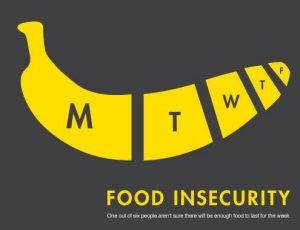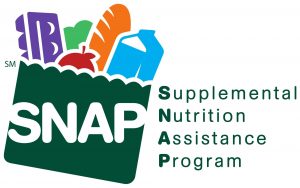One of the critical debates at the center of the new Farm Bill is the future of the Supplemental Nutrition Assistance Program (SNAP). The Farm Bill has typically enjoyed bipartisan support, however the current negotiation has been halted over proposed rules that would tighten work requirements for beneficiaries, a reform that could cut off as many as 1 million recipients.[1] SNAP accounts for around 80% of the Farm Bill budget. Not many details about the proposed changes have been released, just that stricter work requirements would be imposed on able-bodied adults without children, as well as those with school-age children.I hear a lot of discussion from both the general public and our elected representatives that indicate there are still so many misconceptions about the SNAP program, and I’d like to dive deeper into SNAP over my next couple of blogs.
To many, SNAP is still known as food stamps. The origins of the program lie in the Great Depression, when the problem of farmers with surpluses of crops and the problem of food insecure families led the government in intervene and meet the needs of both struggling groups. The USDA reports that in 2016 (most recent data), just over 12% of households in the United States were food insecure, meaning they did not have “access, at all times, to enough food for an active, healthy life for all household members.” Of that 12%, around 5% were ranked as very low food security, which means one or more members of the household are more likely to be skipping meals on a regular basis throughout the year (whereas some food insecure households simply have to switch to a less varied—and often less nutritious—diet).[2] This translates into 41.2 million people in food-insecure households, of which 6.5 million were children and around 703,000 of those (1% of the nation’s children) lived in households in which one or more child experienced very low food security. While SNAP typically does not provide families with enough funds to cover a full month’s worth of groceries, it does help tide recipients over (hence supplemental in the name).
 This means SNAP is not something a person can necessarily live off of, instead of working to earn enough income. The average SNAP benefit per person was $125/month.[3] The most common misconception I hear is that SNAP encourages people not to work. In fact, receiving SNAP benefits for more than 3 months, participants must meet work requirements, unless exempt for health or age reasons. Work requirements include “Registering for work; Not voluntarily quitting a job or reducing hours; Taking a job if offered; and Participating in employment and training programs, if assigned by the State.”[4] When beneficiaries do not comply with these requirements, their benefits are halted. Most able-bodied SNAP recipients are in fact working. In our own congressional district (Illinois 13), of the over 23,000 families receiving SNAP, over 80% had at least 1 member working (and nearly a quarter had two working members).[5]
This means SNAP is not something a person can necessarily live off of, instead of working to earn enough income. The average SNAP benefit per person was $125/month.[3] The most common misconception I hear is that SNAP encourages people not to work. In fact, receiving SNAP benefits for more than 3 months, participants must meet work requirements, unless exempt for health or age reasons. Work requirements include “Registering for work; Not voluntarily quitting a job or reducing hours; Taking a job if offered; and Participating in employment and training programs, if assigned by the State.”[4] When beneficiaries do not comply with these requirements, their benefits are halted. Most able-bodied SNAP recipients are in fact working. In our own congressional district (Illinois 13), of the over 23,000 families receiving SNAP, over 80% had at least 1 member working (and nearly a quarter had two working members).[5]

Our main interest in SNAP here at The Land Connection is primarily tied to the Champaign Farmers Market, where our SNAP incentive program has flourished and helped us make food access for all a hallmark of the Market. One of the primary advantages of SNAP as a social safety net program is the economic impact it brings to the community. Not only does the program help food insecure families afford more food, but it has an economic multiplier effect, where $1 in SNAP benefits generates $1.80 in economic impact.[6] (This multiplier effect can be even greater when SNAP is used at a farmers market, where research shows that every dollar spent at a farmers market typically generates around $2 for the local economy, because those dollars spent tend to stay in the community[7]). So first of all, SNAP is not only a program that benefits those who directly receive the benefits; it also benefits communities across the country, with a higher concentration of SNAP recipients in living in rural counties.In my next blog we’ll look further into who receives SNAP and the impact of this program. We’ll also share some of our own farmers market vendors’ experiences with SNAP customers and examine the impact of SNAP incentive programs on small farms across the country.
[1] https://www.politico.com/story/2018/03/28/food-stamp-fight-kill-farm-bill-446477
[2] https://www.ers.usda.gov/topics/food-nutrition-assistance/food-security-in-the-us/key-statistics-graphics.aspx
[3] https://www.fb.org/market-intel/snap-it-aint-just-for-cities
[4] https://www.fns.usda.gov/snap/eligibility#Am%20I%20eligible%20for%20SNAP?
[5] https://fns-prod.azureedge.net/sites/default/files/ops/Illinois_13.pdf
[6] https://www.fns.usda.gov/ops/snap-community-characteristics-illinois
[7] http://sfp.ucdavis.edu/files/238053.pdf



